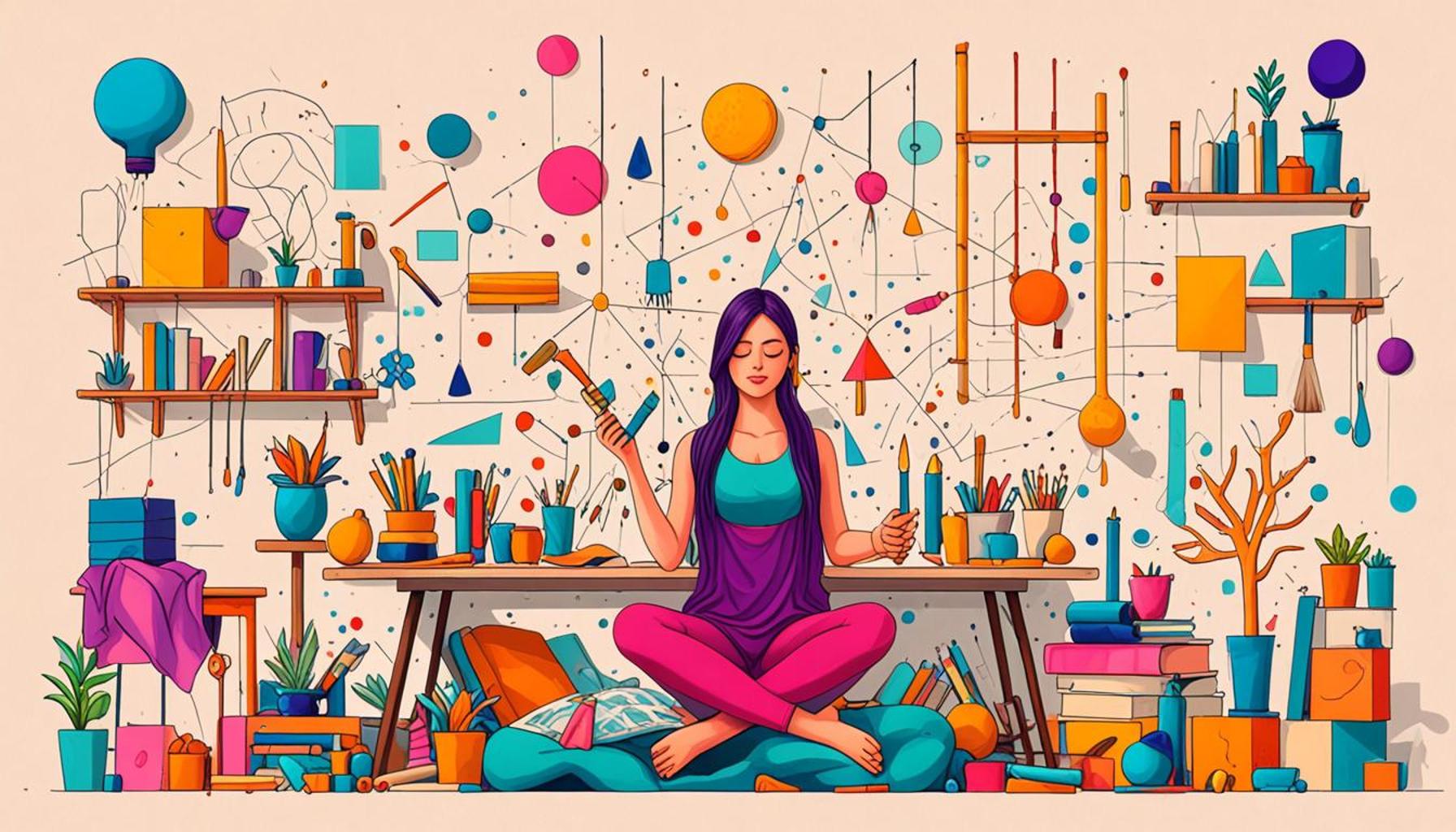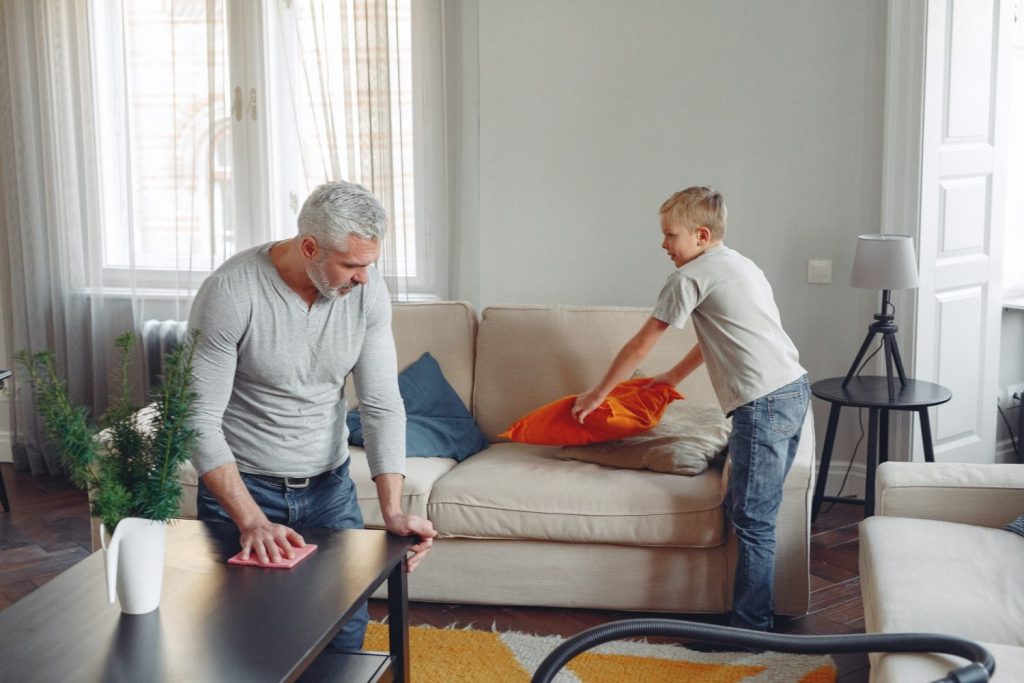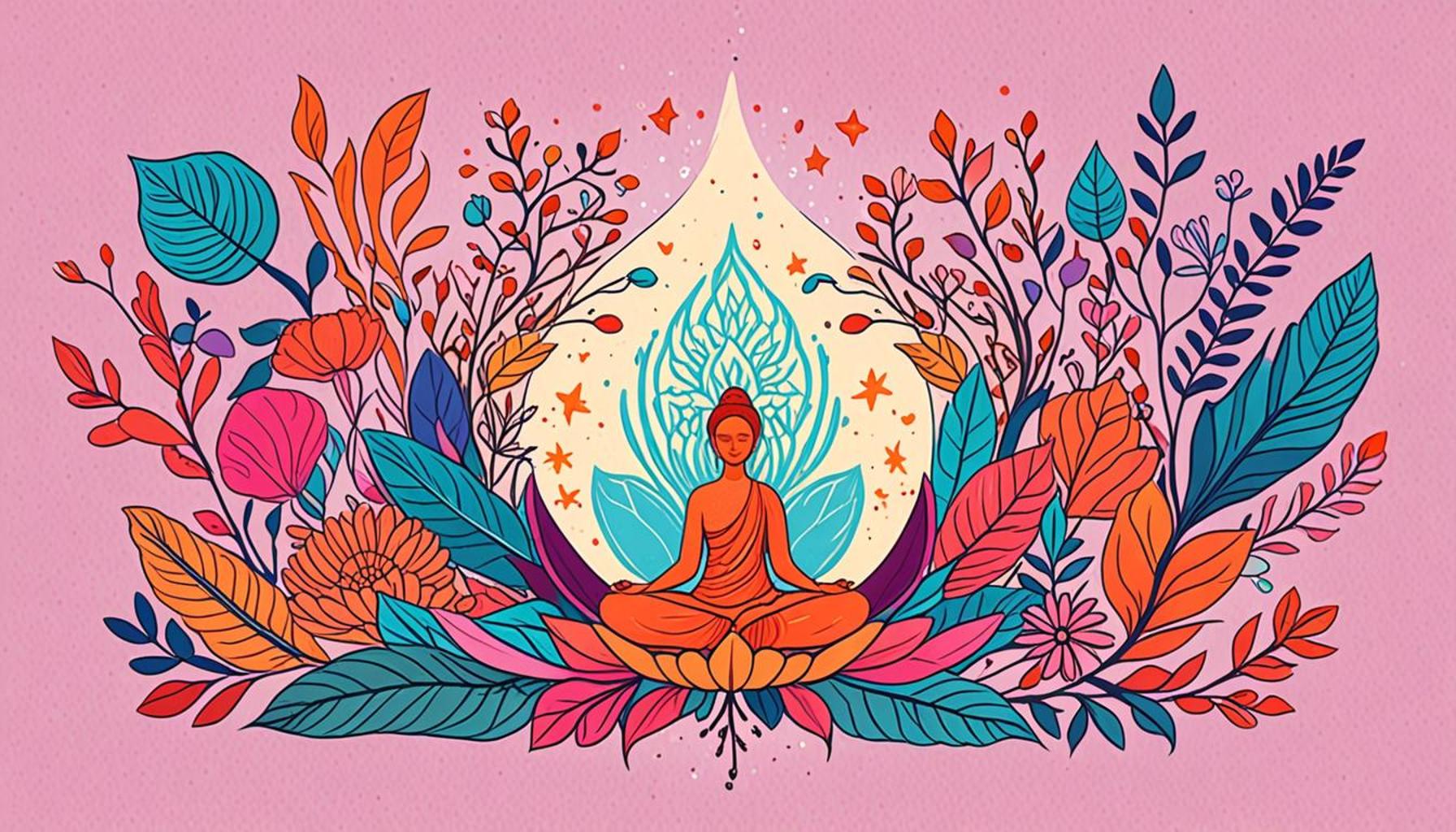Deconstructing Clutter: Mindful Living as a Tool for Organizing Spaces and Minds

Understanding Clutter in Today’s World
In a society bombarded with constant stimuli and overflowing possessions, clutter has become a significant barrier to personal peace. Shopping sprees, online marketplaces, and the culture of “more is better” have contributed to our homes and minds being filled with excess. This relentless accumulation of belongings can lead to feelings of overwhelm and anxiety. Amid the chaos, many individuals are beginning to understand the relationship between physical and mental space. The practice of mindful living offers a transformative approach to organizing not just our environments, but also our thoughts and emotions.
Why Focus on Mindful Living?
Mindful living encourages us to cultivate awareness and intention in every aspect of our lives. Here are a few reasons to embrace this philosophy:
- Enhanced Focus: Reducing clutter helps improve concentration and clarity. Research indicates that individuals who maintain a tidy workspace can think more clearly and work more effectively, leading to better performance at work or school.
- Emotional Well-being: A tidy space can lead to decreased stress and anxiety. Multiple studies have shown that environments filled with clutter can elevate cortisol levels, a hormone associated with stress. In contrast, a clean space fosters calmness and promotes a sense of control.
- Streamlined Decision-Making: Fewer items can simplify choices and improve efficiency. Cognitive load theory illustrates how our mental resources are limited; the more decisions we have to make, the harder it becomes to make choices effectively. By minimizing our possessions, we can dedicate our mental energy towards what truly matters.
Exploring the Connection Between Space and Mind
Clutter often mirrors internal turmoil. The chaotic stacks of paper on a desk or overflowing closets may reflect the disorganization within our minds. By deconstructing our physical spaces, we can uncover the mental patterns that contribute to disorder. This journey through mindfulness allows us to:
- Identify emotional attachments to our belongings. Often, we hold onto items not for their utility but for the memories they carry. Understanding this helps us make more intentional decisions about what to keep.
- Appreciate the concept of minimalism as a pathway to freedom. Minimalists advocate for clear spaces and only keeping what adds value to their lives. This ideology is gaining traction in the U.S. with organizations such as The Minimalists, who promote the benefits of living with less.
- Implement practical strategies to maintain organized spaces. Strategies such as the “one in, one out” rule encourage a continuous cycle of decluttering, while also promoting sustainable habits that prevent the reemergence of clutter.
As we delve deeper into the principles of mindful living, we will explore how this approach can lead to a harmonious balance between our external environments and internal landscapes. Are you ready to deconstruct clutter? Let’s begin this enlightening journey toward a more peaceful existence.
DISCOVER MORE: Click here for innovative space-saving solutions

Embracing Mindfulness in Decluttering
To embark on the journey of deconstructing clutter, one must first recognize the profound impact of mindful living on both our physical spaces and mental well-being. Mindfulness is more than just a trend; it is a lifestyle choice that brings awareness to our habits, routines, and emotional states. It encourages us to be present, create intention, and focus on the task at hand—challenging us to assess not just what we want to keep, but also why we feel attached to certain items.
Steps to Cultivate Mindful Decluttering
Implementing a mindful approach to decluttering can transform the clutter removal process into an opportunity for introspection and growth. Here are key steps to guide you through this transformative journey:
- Start Small: Choose one area or category of items to declutter, such as a desk drawer or a closet. Tackling smaller sections prevents overwhelm and provides a sense of accomplishment.
- Engage Your Senses: As you sift through items, take the time to feel textures, notice colors, and recognize scents. This sensory engagement deepens your connection to your belongings and encourages thoughtful decision-making.
- Ask Meaningful Questions: When considering whether to keep an item, ask yourself questions like, “Does this item serve a purpose in my life?” or “Does it spark joy?” This practice, popularized by decluttering expert Marie Kondo, can lead to more intentional choices.
- Create a Donation Plan: Rather than simply throwing items away, develop a plan for donating useful items to local charities. This not only helps declutter your space but also contributes positively to your community.
- Reflect and Release: Once you decide to part with an item, take a moment to acknowledge its past role in your life and express gratitude. This mindful release can make it easier to let go of emotional attachments.
As we adopt these steps, it is essential to maintain a mindset of patience and kindness toward ourselves. Mindful living fosters a non-judgmental approach that allows us to understand our relationships with our belongings more deeply. By approaching decluttering as a process rather than a one-time event, we can sustainably maintain order in our spaces and clarity in our minds.
The Ripple Effects of Mindful Decluttering
The benefits of mindful decluttering extend beyond just a tidy physical environment; they reach into every aspect of our lives. Research indicates that engaging in decluttering as a mindfulness practice can lead to enhanced emotional regulation and resilience. As stress levels decrease, individuals often experience improved productivity, creativity, and an overall sense of well-being. The connection between a clear space and a clear mind cannot be overstated; one influences the other in profound ways.
By embracing mindfulness as a tool in our decluttering endeavors, we not only organize our homes but also cultivate a sense of peace and clarity within ourselves. The journey of mindful living offers a pathway to a life that is intentional, focused, and liberating—a lifestyle that allows us to prioritize what truly matters while letting go of the rest.
| Mindful Living | Benefits of Organizing |
|---|---|
| Increased Focus | Clarity in Spaces enhances productivity and creativity. |
| Emotional Well-being | A decluttered environment contributes to reduced stress and anxiety. |
| Intentional Living | Fosters a more meaningful connection with the belongings we keep. |
| Mindfulness Practices | Encourages self-reflection and awareness in daily activities. |
These elements emphasize how the practice of mindful living extends beyond just physical space to enhance emotional and mental clarity. A well-organized environment can lead to a heightened sense of peace, allowing individuals to navigate their spaces and lives more effectively. By prioritizing mindfulness in organization, one begins to cultivate a living space that reflects personal values and aspirations.Furthermore, studies showcase that a clutter-free space often translates into a clutter-free mind. When distractions are minimized, individuals are more capable of maintaining focus on tasks at hand. This shift not only applies to individual well-being but also extends to relationships, fostering better communication and understanding. As the journey of decluttering unfolds, the connection to mindfulness reveals its transformative potential, inviting individuals to reconsider their definitions of home and how they interact with their surroundings. The art of mindful living serves as a profound tool for anyone seeking balance in their physical and mental landscapes.
DISCOVER MORE: Click here to enhance your decluttering journey
The Intersection of Minimalism and Mindfulness
Mindful living resonates closely with the principles of minimalism, which emphasizes simplicity and intentional living. In today’s fast-paced society, where consumerism often overshadows mindfulness, the convergence of these ideologies presents a compelling framework for addressing both clutter and unfulfilled desires. Research by the American Psychological Association suggests that overconsumption can lead to heightened levels of anxiety and dissatisfaction. By embracing minimalist principles, individuals can experience significant psycho-emotional relief, paving the way for a more thoughtful and balanced existence.
Visualizing Minimalism
Visual minimalism—characterized by clean lines, open spaces, and restrained color palettes—serves as an aesthetic mirror to the mental clarity that mindful living fosters. For instance, furniture designer Muji exemplifies this approach in its products, which are designed to elicit peace and functionality with minimal distractions. Adopting similar principles in one’s home can create a welcoming atmosphere that invites comfort and reduces cognitive load.
Just as a cluttered space can overwhelm our senses and lead to decision fatigue, a visually minimalistic environment has been shown to enhance focus and creativity. A study by Harvard Business Review found that employees in minimally designed offices demonstrated better concentration and productivity compared to those working in cluttered spaces, further emphasizing the mind-space connection.
The Role of Digital Clutter
Decluttering is not limited to our physical spaces; digital clutter can also disrupt our mental clarity. According to a study conducted by RescueTime, individuals spend an average of 3.5 hours per day on their devices, often scrolling through hundreds of notifications and emails—hardly conducive to a mindful existence. This phenomenon underlines the importance of digital minimalism, where removing unnecessary apps and limiting screen time becomes a crucial aspect of decluttering the mind.
Engaging in digital detoxes can enhance mental well-being by reducing distractions and promoting deeper engagement with the world around us. Setting boundaries, such as designated screen-free zones or times, encourages intentional interactions with our digital devices. Not only does this reduce stress, but it can also lead to improved relationships as we focus on genuine connections, free from the constant pull of our screens.
Building a Mindful Community
Mindful living and decluttering also thrive within supportive communities. Those embarking on an organizing journey often find it beneficial to surround themselves with like-minded individuals who share similar values about simplicity and intentionality. Local workshops, online forums, or social media groups can serve as platforms for sharing experiences, strategies, and encouragement.
For example, the rise of KonMari](TM) workshops reflects a communal interest in decluttering facilitated by mindfulness practices. The fun and inspiration derived from group settings can enhance motivation and accountability, making the decluttering process less daunting and more rewarding.
As individuals share their insights, it fosters a collective commitment to mindful living, nurturing not only organized spaces but also enriched lives that are anchored in purpose and simplicity.
DISCOVER MORE: Click here to learn about essential digital minimalism tools
Conclusion
In the journey towards mindful living, deconstructing clutter emerges as a powerful and transformative practice that not only organizes our spaces but also cultivates mental clarity. As we navigate through the chaos of modern life, the principles of minimalism resonate more than ever, urging us to assess what truly adds value to our environments and emotional well-being. By intentionally creating environments that prioritize simplicity and purpose, we pave the way for a more harmonious existence.
The connection between our physical surroundings and mental states cannot be overstated; a clutter-free space often translates to a clutter-free mind. Furthermore, as we face the challenges of digital clutter, adopting practices such as digital detoxes becomes essential in reclaiming our focus and enhancing our relationships with the world around us. Through participation in supportive communities and shared experiences, we can cultivate a collective commitment to mindfulness, making the decluttering process both inspiring and attainable.
Ultimately, embracing mindful living as a tool for organizing our spaces and minds offers a fresh perspective on how we engage with our possessions, our digital footprints, and our connections with others. Individuals interested in enhancing their well-being can start by exploring key aspects of mindfulness, minimalism, and communal support, all of which are vital elements in achieving a more intentional and enriching life. In a world where we are often overwhelmed by choice and noise, the commitment to declutter can unveil a pathway to profound peace and fulfillment.


